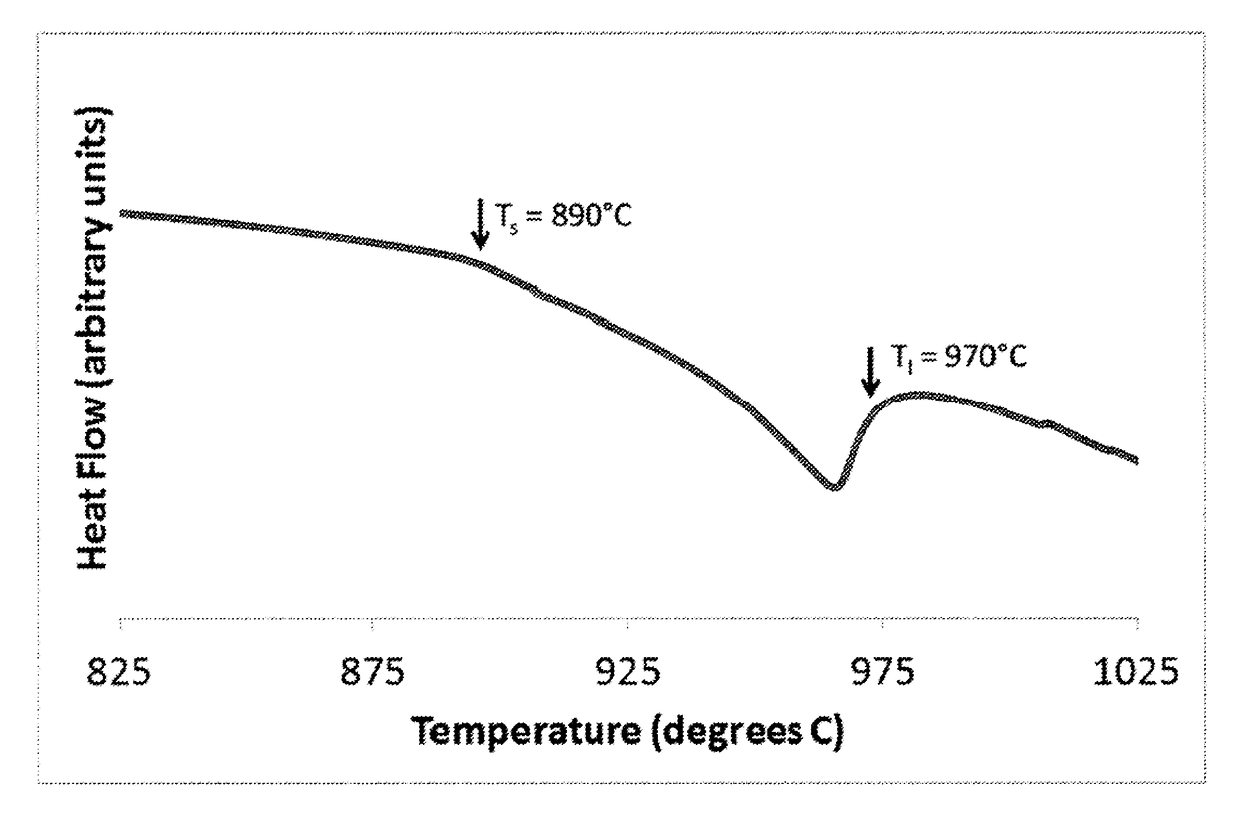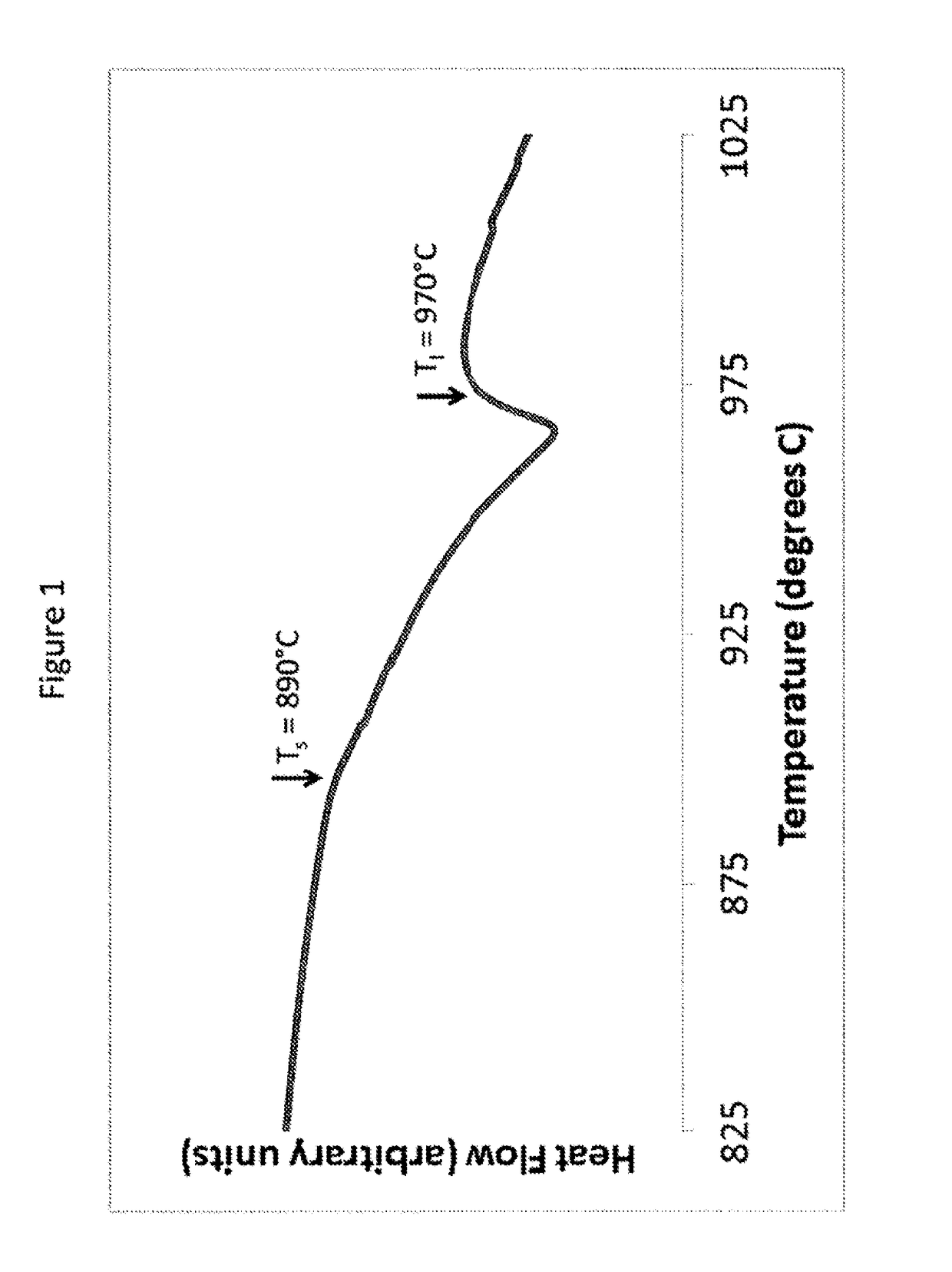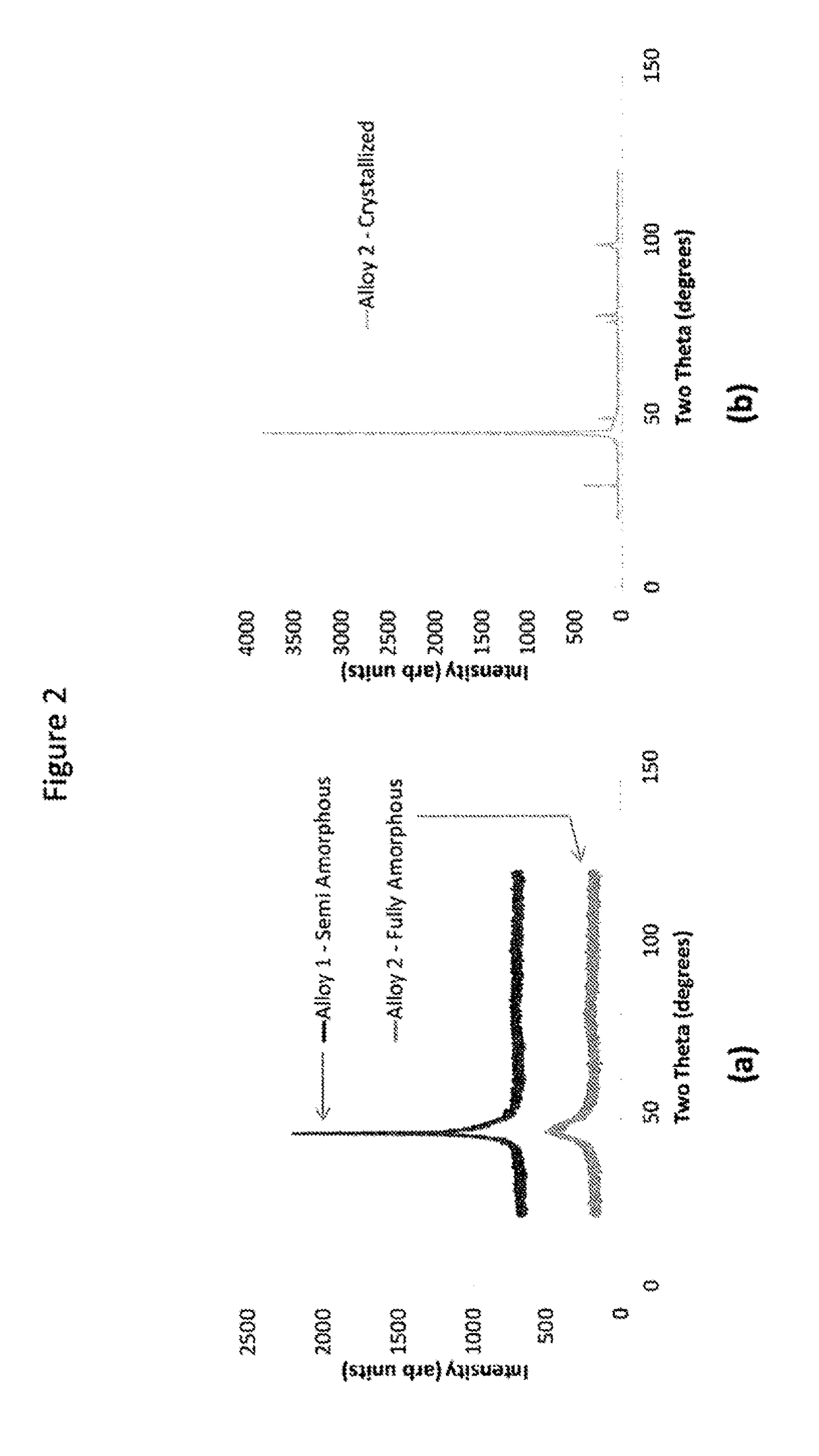Nickel-chromium-phosphorous brazing alloys
a technology of nickel chromium phosphorous and brazing alloys, which is applied in the direction of manufacturing tools, welding apparatus, other domestic objects, etc., can solve the problems of brittle intermetallics in the brazed joints, disintegration of the brazed products, and hydrocarbon build-up on the interior of the furnace, so as to reduce the melting point and reduce the concentration of metalloids , the effect of reducing the melting poin
- Summary
- Abstract
- Description
- Claims
- Application Information
AI Technical Summary
Benefits of technology
Problems solved by technology
Method used
Image
Examples
example i
[0032]A differential thermal analysis (DTA) on an amorphous alloy ribbon having a composition of Ni60Cr25B2P10Si3 (numbers in atomic percent) was made by a conventional Differential Thermal Analyzer to determine the alloy's solidus (Ts) and liquidus (Tl) temperatures. They were found to be Ts=890° C. and Tl=970° C., and were used to determine the optimal brazing temperature. A DTA scan for Alloy 2 is shown in FIG. 1. An X-ray diffraction (XRD) scan reveals that the ribbon is fully amorphous (Alloy 2 in FIG. 2a) or semi-amorphous (Alloy 1 in FIG. 2a) in the as-cast state. For comparison, Alloy 2 was heat treated above the crystallization temperature and the XRD scan is included in FIG. 2b. A brazing foil having the composition of Ni60Cr25B2P10Si3 was placed between two 300 series stainless steel sheets with dimensions of 2.5 cm×10.0 cm×0.09 cm and 1.9 cm×8.9 cm×0.09 cm as shown in FIG. 3 and was brazed at a brazing temperature of 1000° C. with a holding time of 15-20 minutes after be...
example 2
[0033]The brazements of Example 1 were cleared with soap and water and solvent degreased with a final rinse in acetone. These cleaned brazements were weighed on an analytical balance to the nearest 0.0001 g, and overall measurements of length, width, and thickness of each brazement were made using a caliper with resolution of 0.01 mm. The reagent for corrosion testing was prepared based on the concentration in Table II.
[0034]
TABLE IITest solution reagent and concentrationTest SolutionConcentration (ppm)Solution pHCl−1008.0 ± 0.2NO3−20SO32−600SO42−600CH3COO1800
[0035]Three brazements of Example 1 were corrosion tested following Method B of JASO (Japan Automotive Standards Organization) M611-92E Standard for internal corrosion test method for automotive muffler, and three brazements were left unexposed as control specimens. Method B is a cyclic test and one cycle consists of 5 and 24 hour immersions in an oven at 80° C., followed by a cool down to room temperature and reagent change. A...
PUM
| Property | Measurement | Unit |
|---|---|---|
| liquidus temperature | aaaaa | aaaaa |
| temperature | aaaaa | aaaaa |
| temperature | aaaaa | aaaaa |
Abstract
Description
Claims
Application Information
 Login to View More
Login to View More - R&D
- Intellectual Property
- Life Sciences
- Materials
- Tech Scout
- Unparalleled Data Quality
- Higher Quality Content
- 60% Fewer Hallucinations
Browse by: Latest US Patents, China's latest patents, Technical Efficacy Thesaurus, Application Domain, Technology Topic, Popular Technical Reports.
© 2025 PatSnap. All rights reserved.Legal|Privacy policy|Modern Slavery Act Transparency Statement|Sitemap|About US| Contact US: help@patsnap.com



